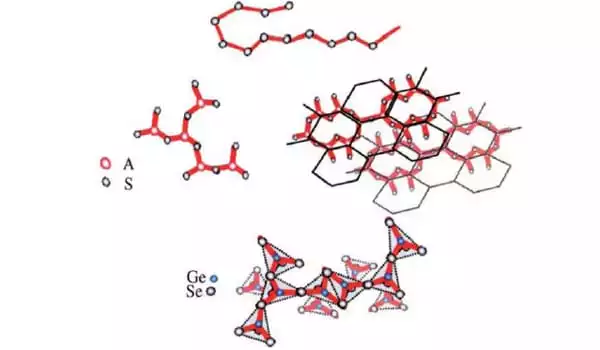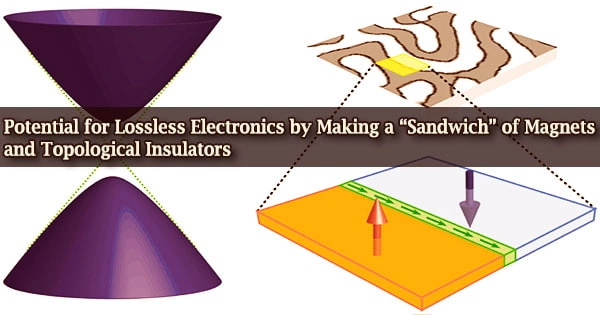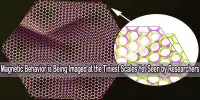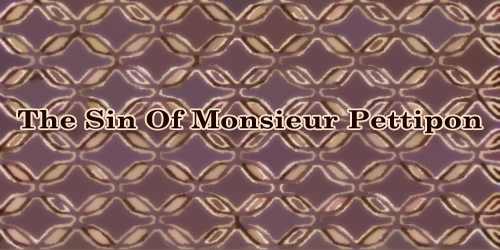Electrical engineers have discovered that altering the physical shape of a class of materials commonly used in electronics allows them to be used in the visible and ultraviolet portions of the electromagnetic spectrum. Chalcogenide glasses, which are already commercially used in detectors, lenses, and optical fibers, may now find a home in applications such as underwater communications, environmental monitoring, and biological imaging.
Duke University electrical engineers discovered that changing the physical shape of chalcogenide glasses, a class of materials commonly used in electronics and near and midinfrared photonics, can extend their use into the visible and ultraviolet parts of the electromagnetic spectrum.
The results appear online in the journal Nature Communications.
Chalcogenide glasses, as the name implies, contain one or more chalcogens, which are chemical elements such as sulfur, selenium, and tellurium. However, one member of the family is missing: oxygen. Because of their material properties, they are an excellent choice for advanced electronic applications such as optical switching, ultra-small direct laser writing (think tiny rewritable CDs), and molecular fingerprinting. However, because chalcogenide glasses strongly absorb wavelengths of light in the visible and ultraviolet parts of the electromagnetic spectrum, their applications in photonics have long been limited to the near- and mid-infrared.
Electrical engineers have discovered that changing the physical shape of a class of materials commonly used in electronics can extend their use into the visible and ultraviolet parts of the electromagnetic spectrum.
“Chalcogenides have long been used in the near- and mid-IR, but they’ve always had the fundamental limitation of being lossy at visible and UV wavelengths,” said Natalia Litchinitser, a Duke professor of electrical and computer engineering. “However, recent research into how nanostructures affect how these materials respond to light suggests that there may be a way around these constraints.”
Litchinitser’s collaborators, Michael Scalora of the US Army CCDC Aviation and Missile Center and Maria Vincenti of the University of Brescia, predicted that nanostructured GaAs might respond to light differently than bulk or even thin film counterparts in recent theoretical research into the properties of gallium arsenide (GaAs), a semiconductor commonly used in electronics. Because of how high-intensity optical pulses interact with the nanostructured material, very thin wires of the material lined up next to each other may generate higher-order harmonic frequencies (shorter wavelengths) that can travel through them.

Consider a guitar string that is tuned to resonate at 256 Hertz, or middle C. The researchers proposed that if made correctly, this string could vibrate at frequencies one or two octaves higher when plucked in small amounts.
Litchinitser and her Ph.D. student Jiannan Gao decided to investigate whether the same could be said for chalcogenide glasses. To put the theory to the test, researchers at the Naval Research Laboratory deposited a 300-nanometer-thin film of arsenic trisulfide onto a glass substrate, which was then nanostructured using electron beam lithography and reactive ion etching to produce 430-nanometer-wide and 625-nanometer-apart arsenic trisulfide nanowires.
Despite the fact that arsenic trisulfide completely absorbs light above 600 THz – roughly the color of cyan – the researchers discovered their nanowires were transmitting tiny signals at 846 THz, which is squarely in the ultraviolet spectrum.
“We discovered that illuminating a metasurface made of carefully designed nanowires with near-infrared light resulted in the generation and transmission of both the original frequency and its third harmonic, which was very unexpected because the third harmonic falls into the range where the material should be absorbing it,” Litchinitser said.
The effect of nonlinear third-harmonic generation and its “phase locking” with the original frequency causes this counterintuitive result. “The initial pulse traps the third harmonic and tricks the material into letting them both pass through with no absorption,” Litchinitser explained.
Moving forward, Litchinitser and her colleagues are experimenting with different shapes of chalcogenides to see if they can engineer them to carry these harmonic signals even better than the initial nanostrips. They believe, for example, that pairs of long, thin, Lego-like blocks spaced a certain distance apart could generate a stronger signal at both third and second harmonic frequencies. They also believe that stacking multiple layers of these metasurfaces on top of one another will boost the effect.
If successful, the method could open up a wide range of visible and ultraviolet applications for popular electronic materials and mid-infrared photonic materials that have previously been barred from these higher frequencies.















